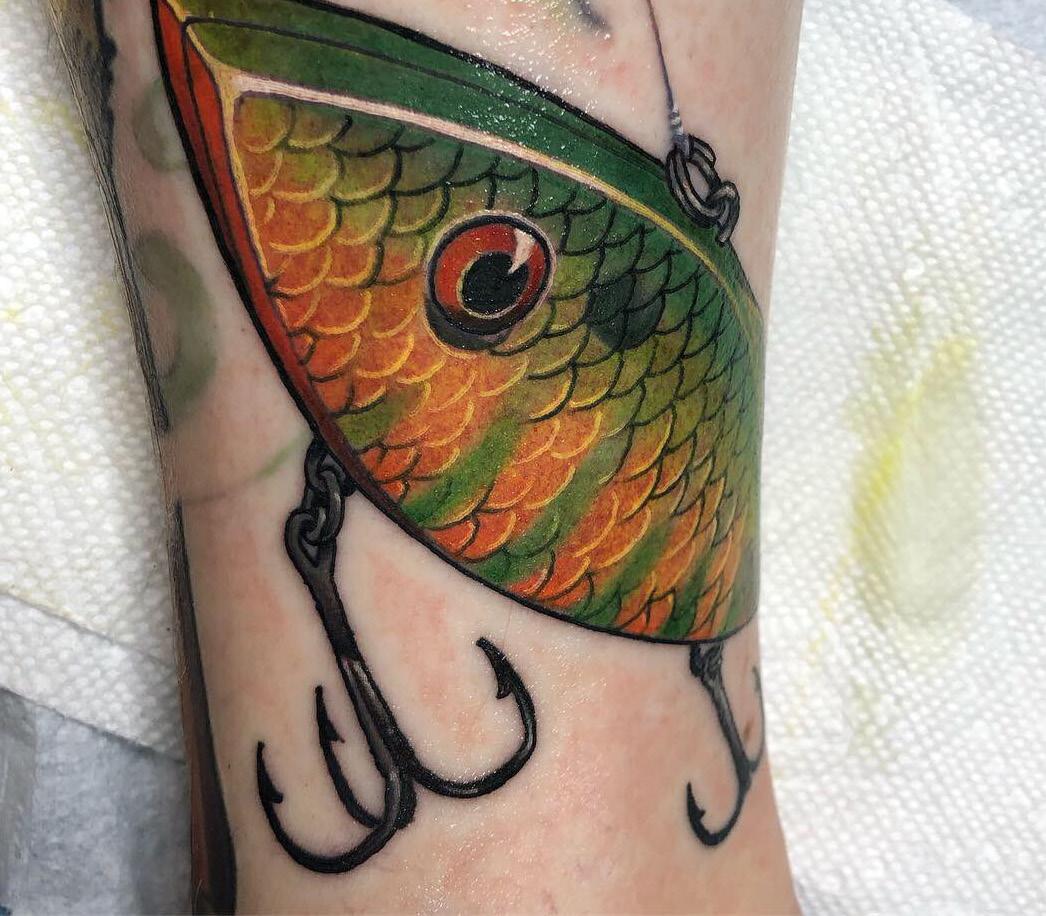4 minute read
Exploring Art
Next Article






Art that Breathes
By Verna Gates | Photography courtesy of Matt Stebly
Great-grandson to Walter Anderson, Matt Stebly follows in his ancestor’s artistic footsteps to create unique artwork on paper — and skin.
In the Gulf waters outside Ocean Springs, Miss., famed artist Walter Inglis Anderson rowed a small boat to Horn Island, capturing images of the creatures within his view. Almost a century later his great-grandson, Matt Stebly, now plies the same waters with palettes and images hauntingly similar to his forefather. Both favor a stained glass look with a window into nature. While Anderson worked on paper and pottery, Stebly is a painter, but his primary canvas is skin. His vivid images attract clients from around the world to his Twisted Anchor Tattoo shop on Government Street. To celebrate the baton passing of family art, a special exhibition titled, “Bloodlines: Matt Stebly,” is showing at the Mississippi Arts + Entertainment Experience, or The MAX, in downtown Meridian, Miss., through July 11. The exhibit contains paintings, photographs, and mixed media pieces. As a young artist, Stebly struggled to support his love of painting. While getting a tattoo, the man working on him admired his original body art and asked if he would like to learn the trade. After serving an apprenticeship, Stebly’s reputation grew beyond his training days. He opened his own shop nine years ago. But after a day of painting skin, Stebly still dreamed of painting watercolors on paper using the tattoo ink he has mastered. “When I was an apprentice, the watercolors were too expensive,” Stebly says. “I couldn’t afford them and ink, so I had to pick one. Since I was making money with ink, it was the obvious choice and I killed two birds with one stone.” Stebly prefers the fast work of watercolor and
tattooing. Both are exacting, got-to-get-it-right the first-time mediums. Tattoo color dries quickly and can’t be changed. He declares that he is the ultimate proofreader before adding words in ink. Like his great-grandfather, Stebly’s preferred subjects are nautical and nature images inspired by the Gulf of Mexico. Anderson’s daughter, Stebly’s grandmother, was a birder and taught him to love the herons, flamingos, owls, and other colorful inhabitants of trees and shores. On his way to work at Twisted Anchor Tattoo, Stebly passes three osprey nests, which he finds as invigorating as morning coffee. One of his favorite paintings sleeps next to him every night — his wife’s tri-color heron tattoo. He has admired it daily for the past six years. He transferred the design to paper as a gift to his wife and she loaned the painting for the exhibit. The couple married eight years ago and have two children. Stebly’s art duality often overlaps. A client may see one of his paintings and ask for the image in a tattoo. Or, he might like a tattoo so much that he recreates it in a painting. A sketch in pencil might be filled in with watercolor or tattoo ink. He describes the two diverse mediums as this: “Paper doesn’t move when you are trying to paint a straight line on it. Paper doesn’t talk back. Paper does not have an opinion. Paper does not pick a color I would not choose. Paper will not collaborate with you.” In addition, paper is not part of you for the rest of your life. Stebly stresses it is important to give people tattoos they are proud of. Another big difference between the two: paper does not feel pain. Stebly describes the pain as scratching on a bad sunburn, unless he is working on a high nerve section such as the neck, knee, wrist, ankle, armpit — basically anything that moves.

Some people cannot sit for more than two hours. Stebly’s tattoos take from three hours to as many as 30 or 40 hours to complete. He has a few clients who will fly in for three days and sit 12 hours per day to get a detailed painterly tattoo. Harder substances also come into his artistic domain. A wooden mixed media piece in the MAX exhibit is a collaboration with fellow tattoo/fine artist friend Dave Koenig, who is known for his female figures. The piece traveled from Mississippi to Omaha as the two traded working on it. Koenig started with a mermaid and shipped it to Stebly. The curvy mermaid needed a complimentary friend and Stebly curled an octopus around her scales. The last one to work on it, he framed the piece and got permission to include it in the showing. More than 20 pieces of his art comprise the exhibit, which includes the history of both Stebly and tattoos. A few paintings of his great-grandfather pay homage to the Anderson bloodlines. Traditional pieces related to tattoos have been borrowed from other museums. “Throughout history, in almost every culture, there have been ways to mark the body,” says Stebly.

Verna Gates is a freelance writer in Birmingham and the author of “100 Things to Do in Birmingham Before You Die.”



